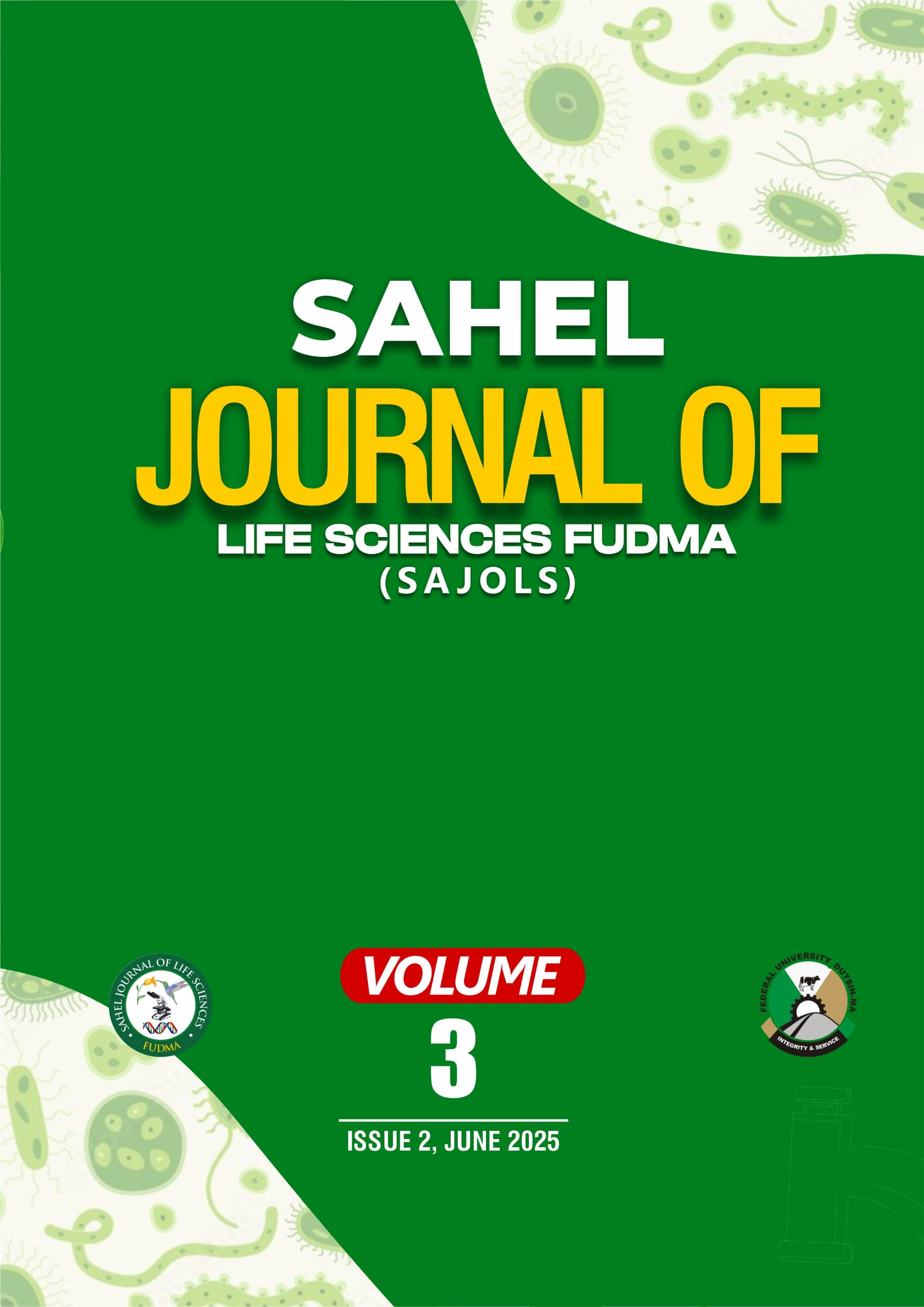Prevalence and Risk Factors of Soil-Transmitted Helminthes among Qur’anic School Children (Almajiri) in Hayin Dogo, Samaru, Zaria, Kaduna State Nigeria
DOI:
https://doi.org/10.33003/sajols-2025-0302-42Keywords:
Almajiri; Children; Helminthes; Prevalence; Qur’aniic; Risk factorAbstract
The term Almajiri is derived from Arabic and refers to a child who leaves home in pursuit of Islamic knowledge. These children are typically under their Mallam’s care with no adequate nutrition, hygiene, shelter, and health care, thus making them vulnerable members of society. Consequently, they face significant environmental hazards and a high risk of parasitic infections. This study examined 100 stool samples from Almajiri children in Zaria. Before sampling, questionnaires were administered to assess socio-demographic characteristics and risk factors. Samples were analyzed for ova of the parasite using direct wet mount and concentration methods with 10% formol-ether. A total of 67 samples tested positive for helminth infections. Among them, 39 had a single infection, while 28 had co-infections. Age distribution showed 29 infected children within 3–10 years and 38 infected children within 11–17 years, respectively. The most prevalent helminth was Hookworm (28.7%), followed by Schistosoma mansoni (22.3%), Strongyloides stercoralis (13.9%), Ascaris lumbricoides (12.8%), Trichuris trichiura (5.3%), Taenia spp. (3.2%), Enterobius vermicularis (2.1%), and Schistosoma intercalatum (1.1%). Although a high prevalence of 38% was recorded in children aged 11–17 years, it was found to be not statistically significant. Risk factors such as lack of toilet facilities, inadequate handwashing, absence of footwear, and contact with refuse dumps were significantly associated with helminth infections. This study highlights that soil-transmitted helminth infections remain a major public health concern among Almajiri children in Zaria. This calls for improved environmental and personal hygiene as a means of reducing transmissibility.


